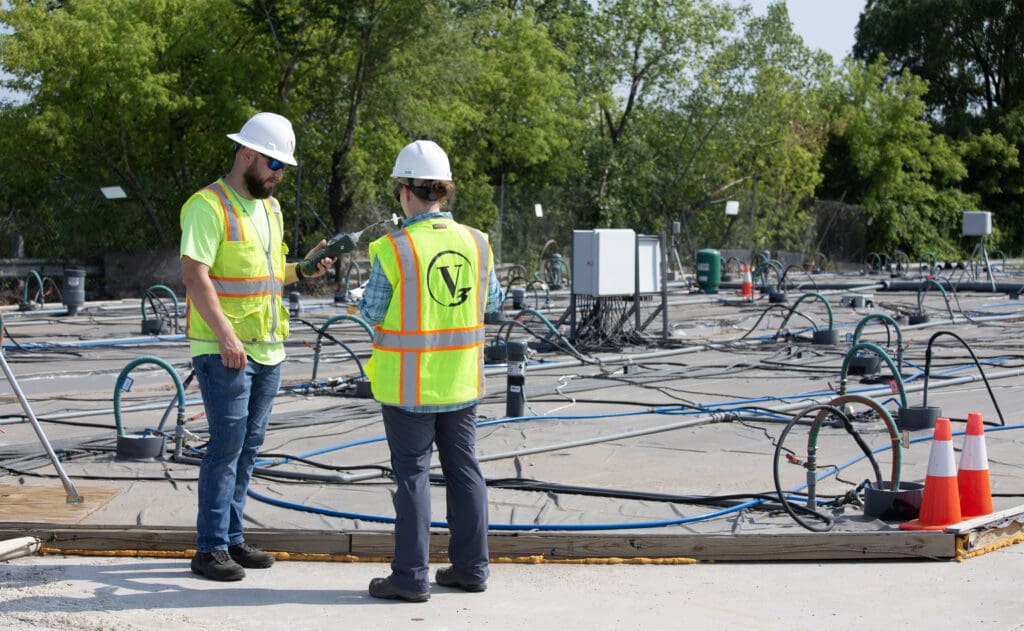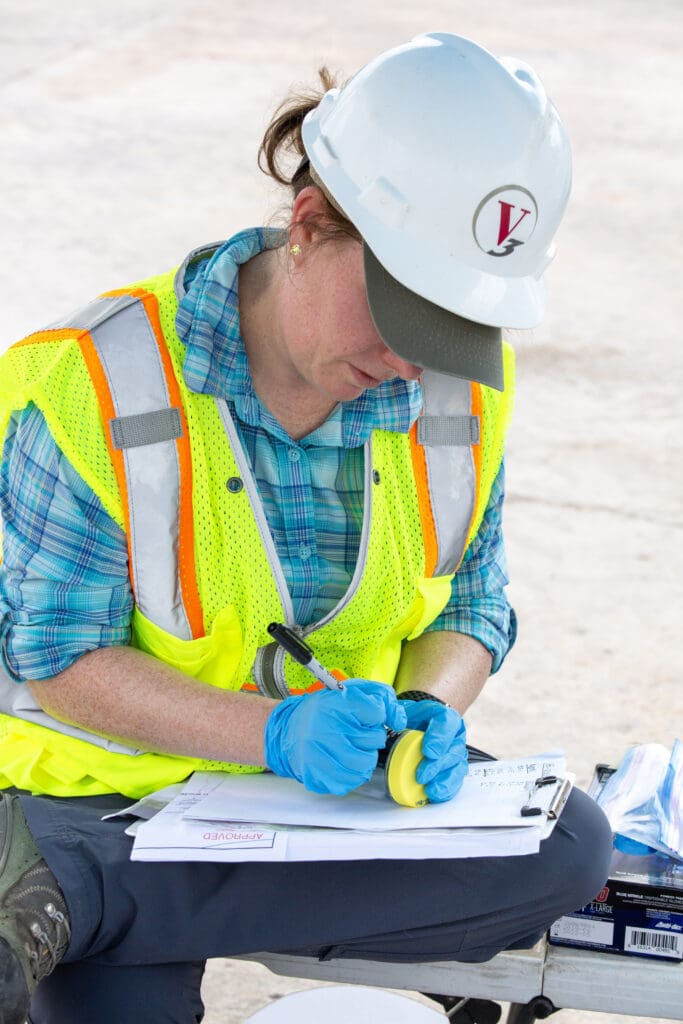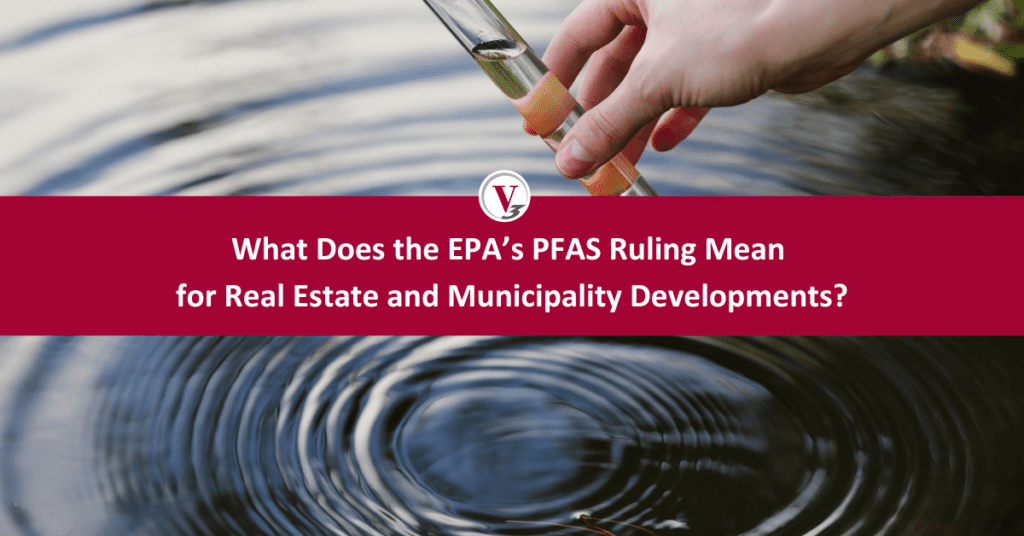The EPA recently passed new regulations regarding PFAS: toxic chemicals with dangerous implications for people and the planet. Real estate and municipality developments facing environmental contamination must address PFAS to stay compliant; learn what’s involved and how V3’s Environmental team supports developers at every step of remediation.
What are PFAS chemicals?

PFAS stands for “perfluoroalkyl and polyfluoroalkyl substances,” which are a classification of man-made chemicals developed in the 1940s to protect against heat and water. They are present in a wide range of consumer products, including non-stick cookware, waterproof fabrics, food packaging, and more. The creation and disposal of these products can disperse PFAS chemicals into the soil, water, and air, leading to prolonged exposure for humans and wildlife.
PFAS are known as “forever chemicals” because they break down slowly—if at all—and can persist in the environment and human body for extended periods. The long-term health effects are still being researched, but studies have shown PFAS to be present in most Americans’ bloodstreams and are linked to increased risk of cancer, heart, and liver issues.
EPA PFAS ruling
In April 2024, the U.S. Environmental Protection Agency (EPA) passed new regulations to protect against PFAS exposure. The ruling designated two widely used PFAS chemicals (PFOA and PFOS) as hazardous substances: dangerous materials with known health risks to people and/or the environment. When PFAS are present, the EPA has detailed the necessary steps to reduce further contamination.
The EPA’s PFAS Strategic Roadmap enforces:
- Required reporting of PFAS leaks, spills, and other releases
- Investigation into contaminated sites
- Penalties to be paid by polluters
- Expedited clean up in at-risk communities
These actions hold polluters responsible for the additional spread of these toxic chemicals.
PFAS and Environmental Due Diligence

The EPA’s PFAS ruling will have lasting effects on real estate and municipality developments moving forward. During environmental due diligence, environmental scientists perform comprehensive site assessments to identify any hazardous and/or petroleum substances, and test the soil, water, and air for toxic materials such as PFAS. Pollution must be addressed before a site can be developed, as failure to meet regulatory requirements can result in major fines and delays.
If environmental due diligence activities uncover the presence of PFAS chemicals, the site will need to follow remediation procedures as specified by the EPA. Depending on the pollution’s severity and how it has spread to surrounding elements (such as contaminated groundwater affecting drinking supply), additional environmental assessments may be necessary.
Properties with PFAS may face changes in:
- Property values
- Development timelines
- Project costs
- Financing availability
- Permit approval
Staying ahead of PFAS

Identifying PFAS early in the development process allows invested parties to make educated decisions on next steps. At V3, our environmental engineers develop comprehensive action plans to help developers through the remediation process, providing the support, experience, and agency relationships needed to address liabilities and stay compliant.
Our extensive environmental site assessment and remediation services include:
- Due diligence / Phase I & II environmental site assessments
- Infrastructure corridor environmental assessment
- Risk assessment & risk-based remediation design
- Remediation & facility decommissioning
- Regulatory closure – state & federal cleanup programs
- Brownfield grant programs
- And more
We stay on top of regulatory shifts to provide the most up-to-date guidance for our clients. Contact us to learn more about addressing PFAS on your development property.

